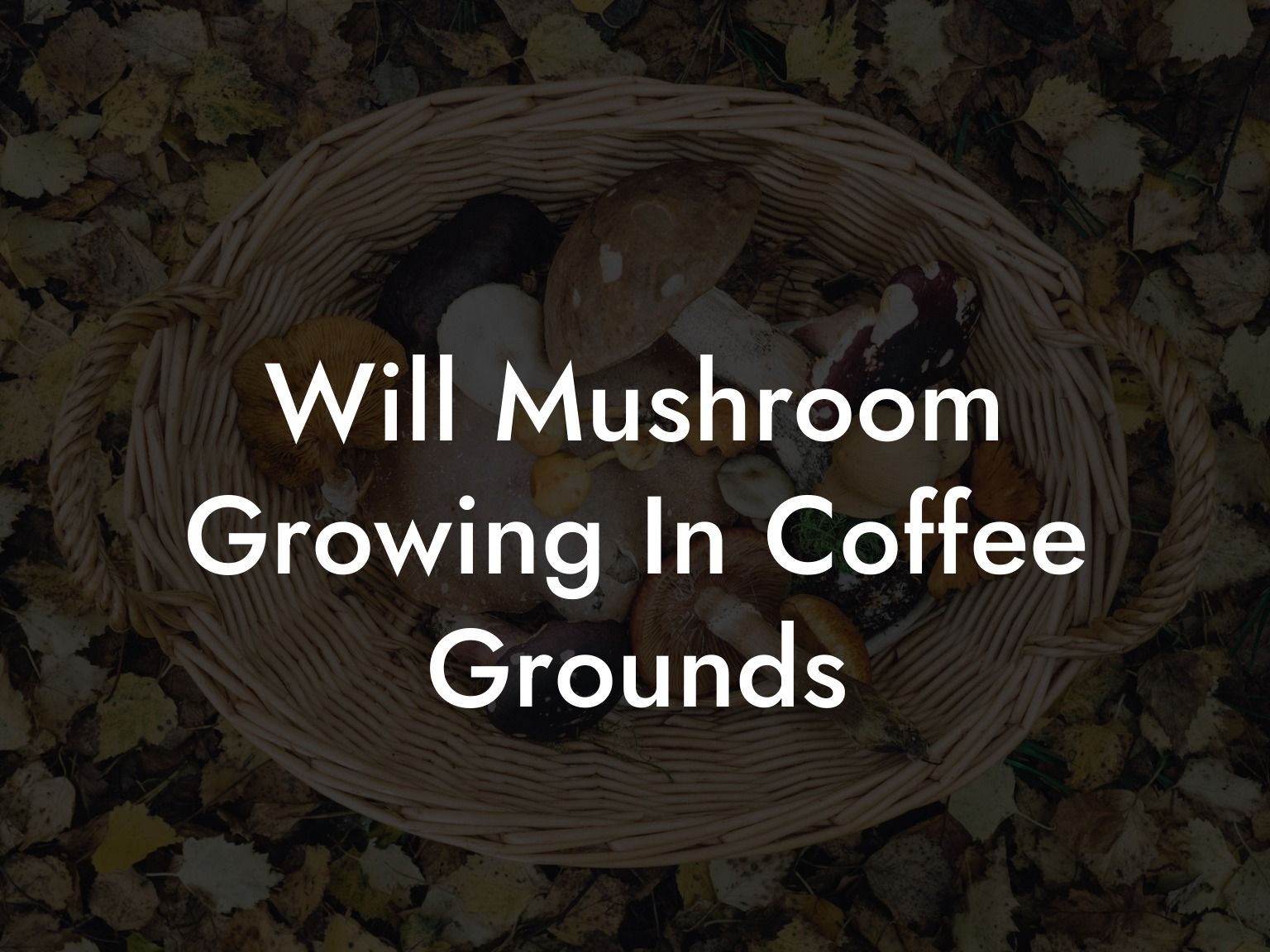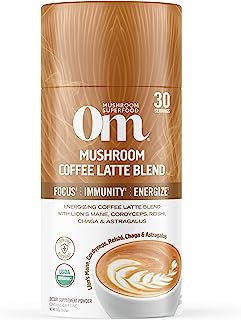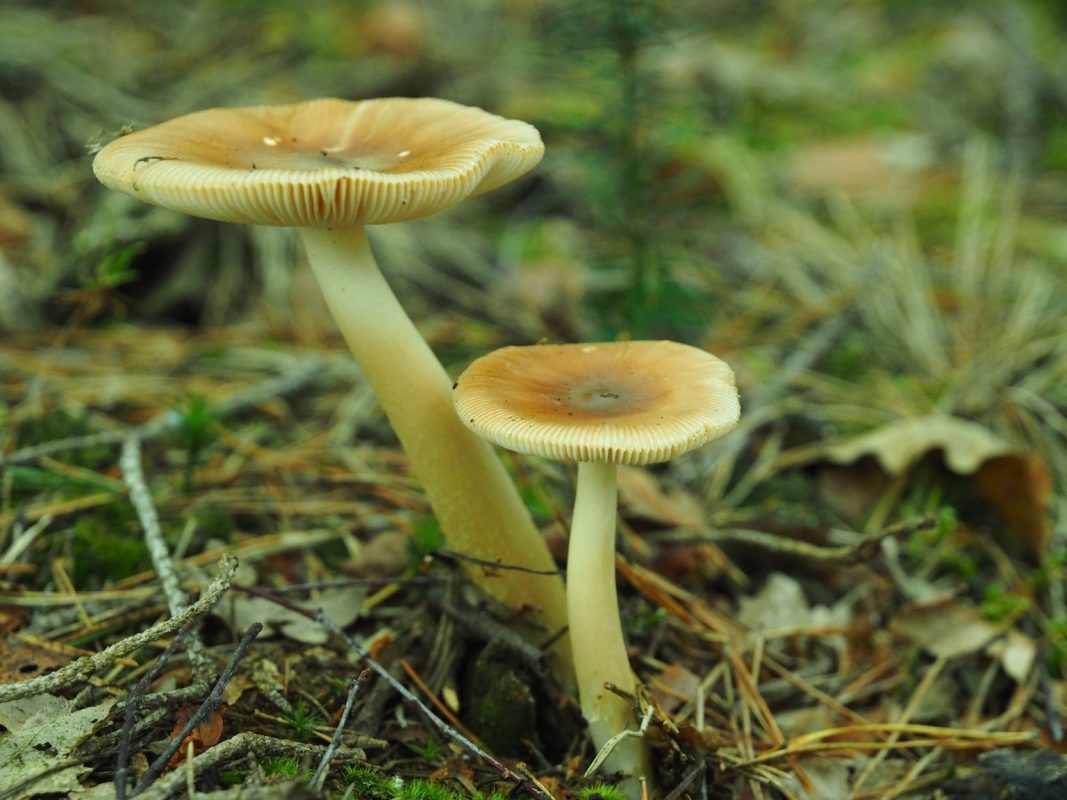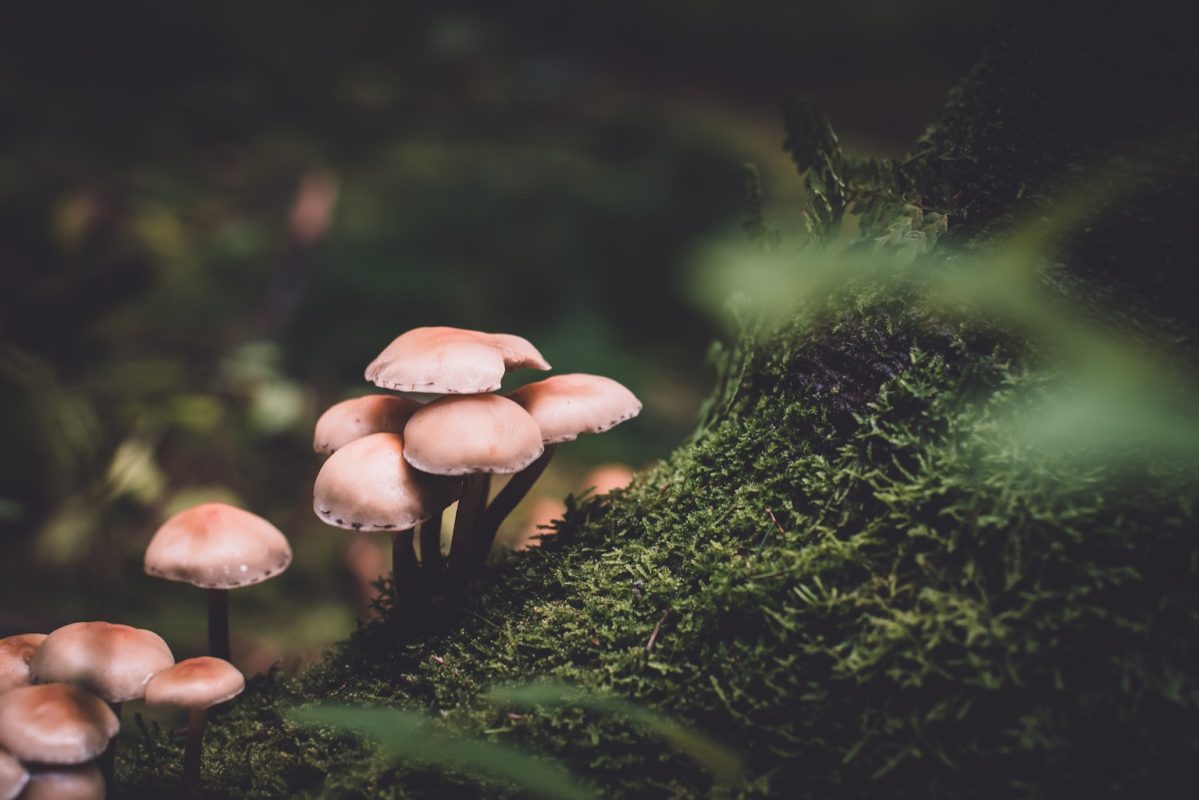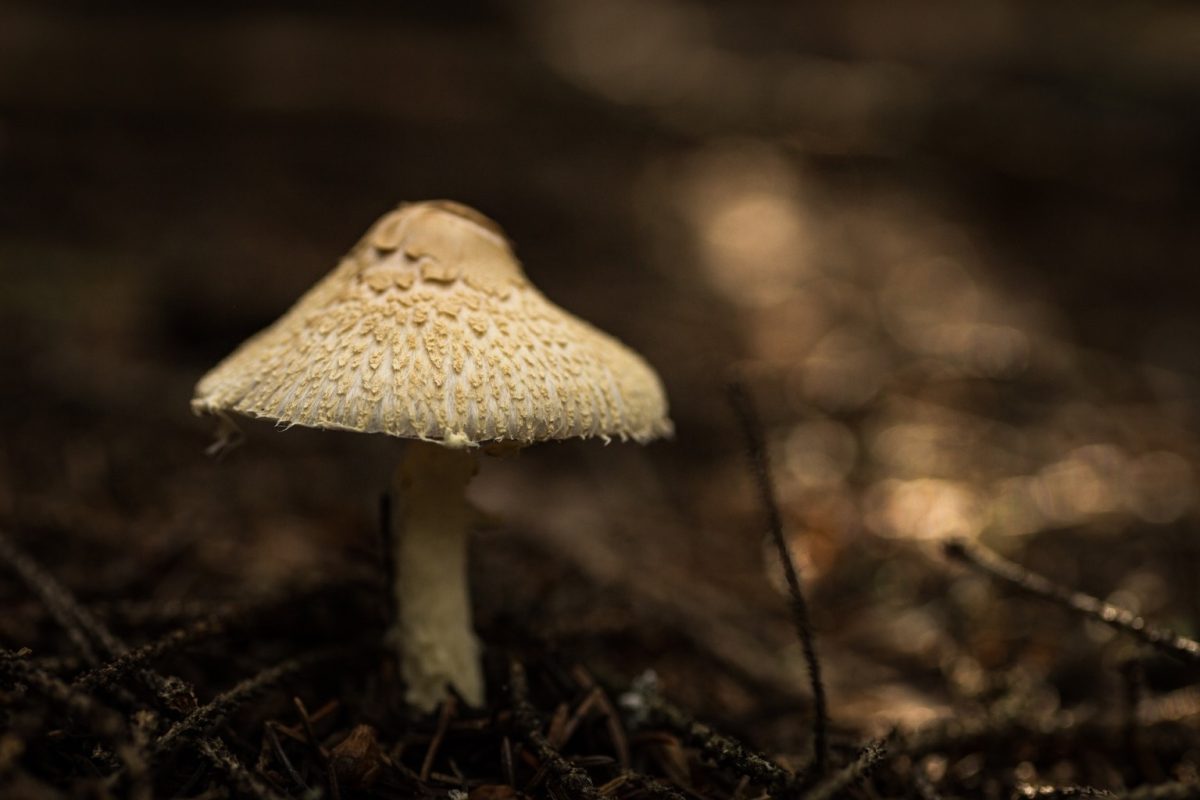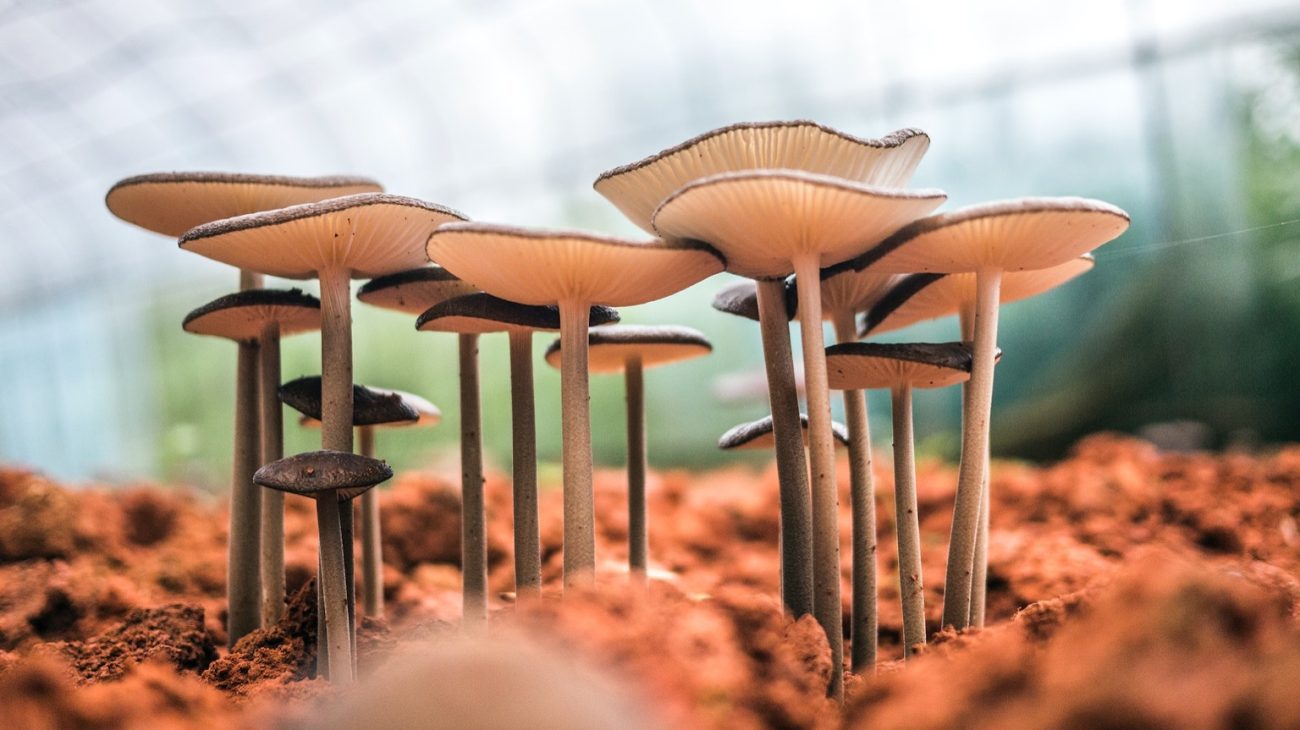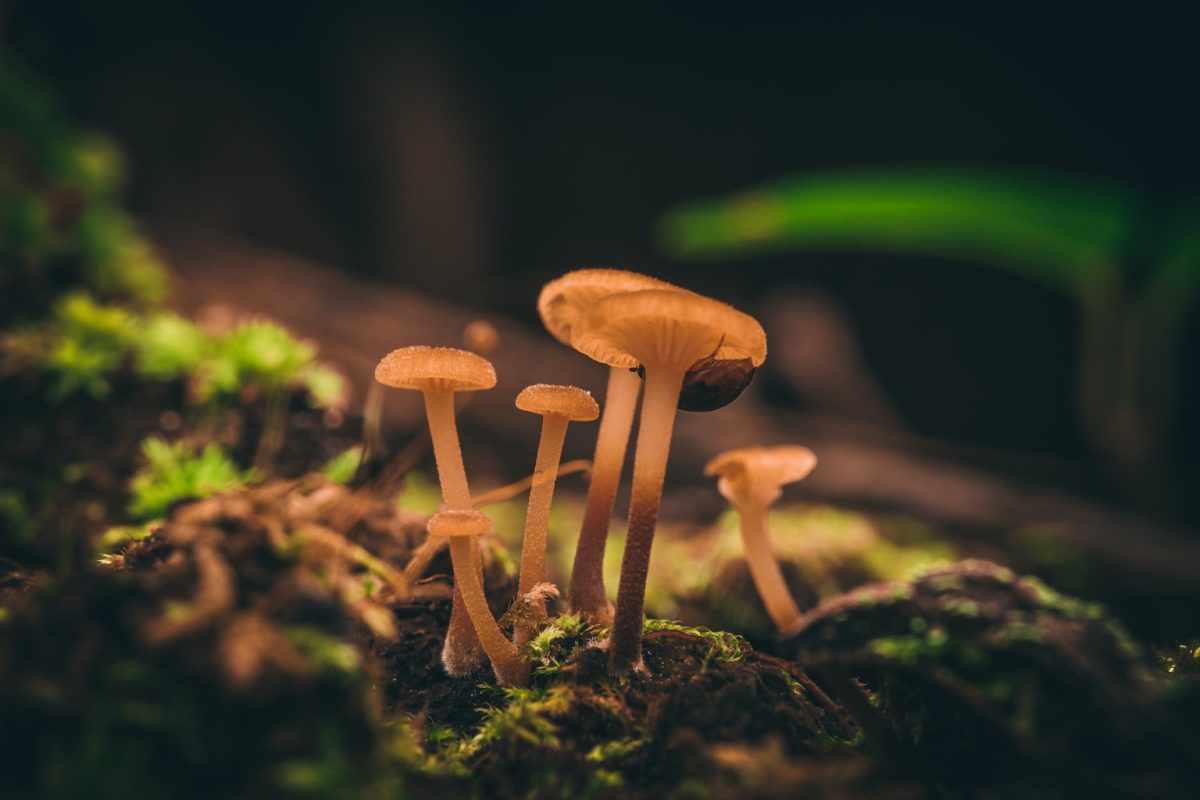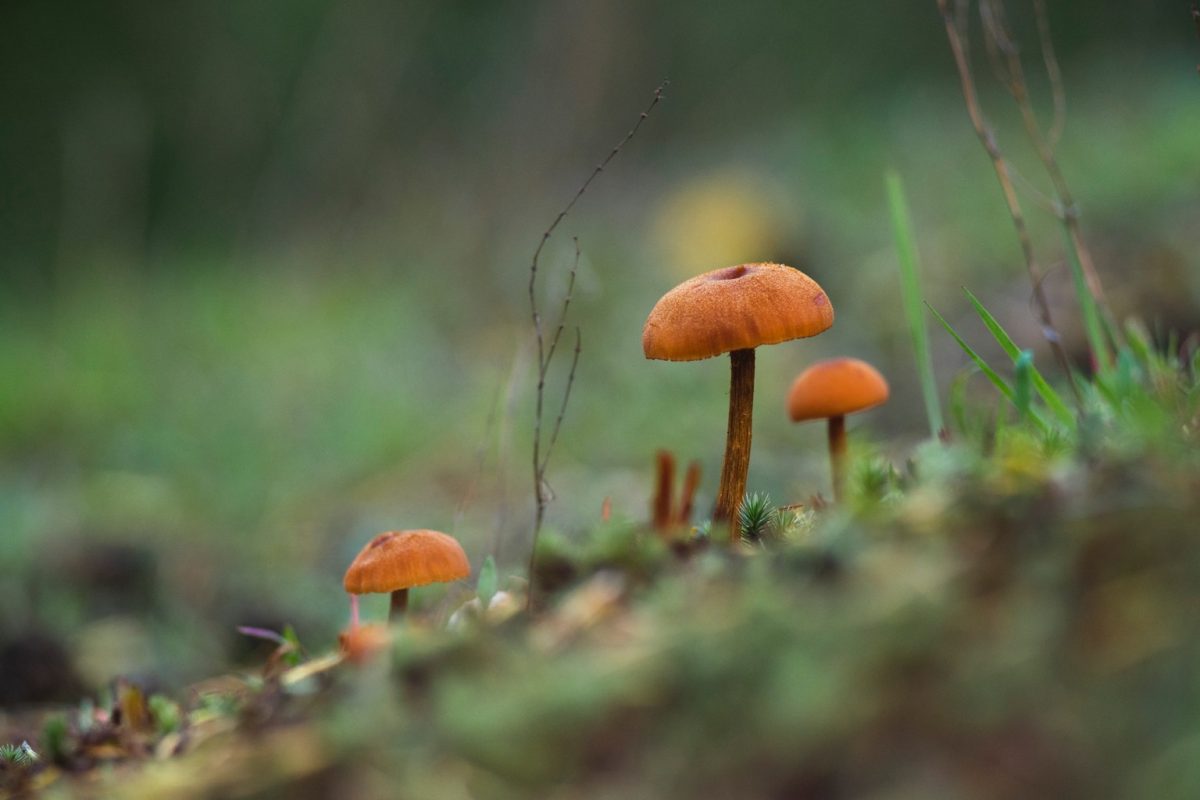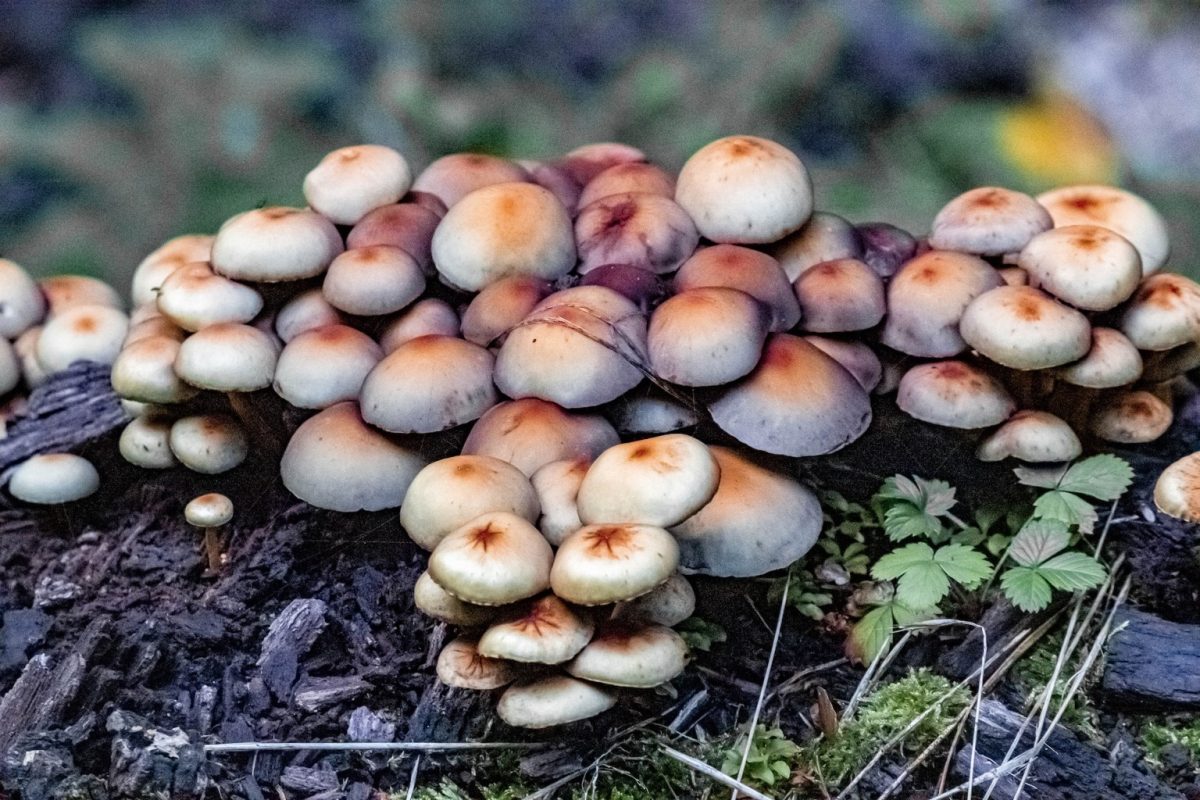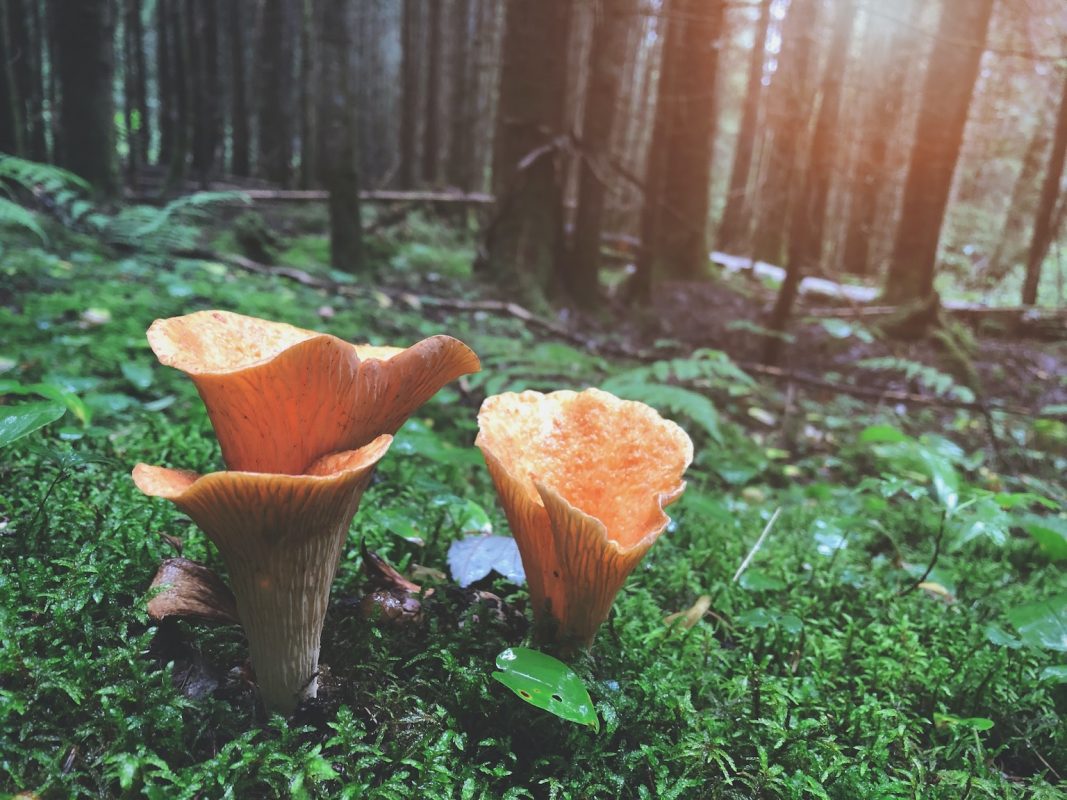Ever thought about giving your coffee grounds a second life, as the secret ingredient in your very own mushroom farm? If you’ve ever sipped a cup of mushroom coffee and wondered, “Can my leftover brew fuel a fungi revolution?” then buckle up, because we’re diving headfirst into the surprisingly groovy world where mushrooms and coffee grounds collide. Get ready for an adventure that’s as enlightening as your morning java and as unexpected as finding mushrooms in your latte!
Quick Links to Useful Sections
- The Surprising Intersection of Mushrooms and Coffee Grounds
- Why Grow Mushrooms in Coffee Grounds?
- Understanding the Science: Coffee Grounds as a Nutrient-Rich Substrate
- The Nutrient Profile
- Moisture Retention
- pH Levels and Microbial Activity
- Step-by-Step Guide to Growing Mushrooms in Coffee Grounds
- Step 1: Gather Your Materials
- Step 2: Prepare the Coffee Grounds
- Step 3: Pasteurize the Substrate
- Step 4: Inoculate with Mushroom Spawn
- Step 5: Incubation Time
- Step 6: Initiate Fruiting
- Step 7: Harvest Your Mushrooms
- Essential Tips and Tricks for a Thriving Mushroom Garden
- Troubleshooting Common Issues
- Issue 1: Slow or Stalled Colonization
- Issue 2: Contamination Concerns
- Issue 3: Inconsistent Fruiting
- Issue 4: Off-Put Smells
- Sustainability and Eco-Friendly Practices in Mushroom Cultivation
- Resources and Community Support: Your Next Steps
- The Future of Fungi: Embracing the Mushroom Coffee Revolution
- Frequently Asked Questions About Growing Mushrooms in Coffee Grounds
- Your Journey to a Fungi Future: Embracing the Coffee-Grown Revolution
The Surprising Intersection of Mushrooms and Coffee Grounds
Welcome to the intersection of sustainability, creativity, and a dash of culinary magic. While most of us toss our coffee grounds without a second thought, a growing community of eco-conscious, Gen-Z and millennial enthusiasts are discovering that those spent beans carry hidden superpowers. Not only do coffee grounds help nourish your garden, but they also double up as an ideal substrate for growing mushrooms. Imagine turning your daily caffeine ritual into a mini mushroom farm that feeds your body, and your soul.
The idea might sound out there, but the marriage of mushroom cultivation and coffee grounds is more practical than it is peculiar. It taps into the current zeitgeist of sustainability, resourcefulness, and DIY innovation. Plus, it makes one heck of a conversation starter at your next plant parent meetup. So sip on that espresso and let’s unravel how the humble coffee ground transforms into a nutrient-rich bed for mushrooms.
Why Grow Mushrooms in Coffee Grounds?
The benefits of growing mushrooms in coffee grounds are as plentiful as your favorite bruh meme collection. For starters, using coffee grounds as a substrate is a stellar example of upcycling, taking something that might end up in the trash and turning it into a sustainable, organic resource. Here are some reasons why this fusion of fungi and coffee is catching fire:
- Sustainable and Eco-Friendly: Repurposing coffee grounds reduces waste and lowers your carbon footprint. It’s a win-win for you and the planet.
- Built-in Nutrient Boost: Coffee grounds are rich in nitrogen and other essential nutrients, creating a fertile environment for mushrooms to flourish.
- Cost-Effective: Forget pricey commercial substrates. Your local café is essentially a free mushroom-growing partner.
- Fascinating and Fun: Let’s be honest, growing your own mushrooms is both a practical experiment and a cool hobby that elevates your DIY cred.
- Enhanced Flavor Profiles: Some claim that mushrooms cultivated on coffee grounds have a subtly unique flavor, adding an artisanal twist to your culinary creations.
Merging mushrooms with coffee grounds is not just about being green; it’s about challenging convention, pushing creative boundaries, and reimagining what waste can do. It’s a power move in the world of sustainable living that’s well-suited for those who dare to innovate.
Looking For The Best Mushroom Coffee? You'll Love These:
Understanding the Science: Coffee Grounds as a Nutrient-Rich Substrate
Before you start envisioning a full-blown mushroom metropolis in your kitchen, let’s break down the science behind why coffee grounds make an excellent substrate for fungal growth. When you brew your coffee, the grounds left behind might seem mundane, but they are actually brimming with organic compounds that mushrooms love. Here’s the lowdown:
The Nutrient Profile
Coffee grounds are rich in nitrogen, a critical element that complements the carbon-based substrates mushrooms need. They also contain small amounts of phosphorus, potassium, and various trace minerals, making them a balanced medium for synergistic growth. This nutrient cocktail helps mushroom mycelium, the network of fungal threads, develop healthy, robust structures.
Moisture Retention
One of the key factors in successful mushroom cultivation is maintaining the right level of moisture. Coffee grounds naturally retain water, providing an ideal microenvironment for mycelium colonization. Their fibrous structure allows for excellent air circulation while holding onto the essential moisture that mushrooms crave.
pH Levels and Microbial Activity
The pH level of coffee grounds, which tends to be slightly acidic, can help guard against contaminant bacteria and undesirable fungi. However, this acidity must be moderated with other components in your substrate mix. Many cultivators blend coffee grounds with other organic materials like sawdust or straw to create the perfect pH balance and texture.
With the science on your side, you’re not just planting mushrooms, you’re conducting a nutrient-rich, eco-friendly experiment that transforms everyday waste into a thriving fungal ecosystem.
Step-by-Step Guide to Growing Mushrooms in Coffee Grounds
Ready to roll up your sleeves and get your hands (and possibly your face) mushy? This detailed guide will take you through the process of transforming coffee grounds into a mushroom growing paradise. Whether you’re a first-time cultivator or a seasoned mycophile, these steps will help ensure your fungi flourish.
Step 1: Gather Your Materials
First things first, let’s talk about supplies. Here’s what you’ll need:
- Used coffee grounds: Collect plenty of fresh grounds. Your local café might even offer them for free if you ask nicely.
- Mushroom spawn: Purchase your spawn from a reputable supplier. Oyster mushrooms, shiitake, and lion’s mane are popular choices due to their adaptability.
- A clean container: Choose a container or a grow bag that allows for air circulation. Plastic containers or eco-friendly grow bags work well.
- Additional substrate (optional): Consider adding materials like straw, sawdust, or coco coir to balance the texture and pH of the coffee grounds.
- Sterilization equipment: A pressure cooker or large pot for pasteurizing your substrate can help reduce contaminants.
Step 2: Prepare the Coffee Grounds
Fresh coffee grounds are best, but if they’ve been sitting around for too long, you risk unwanted contamination. If possible, use grounds that are a day or two old. Spread them out on a clean surface to let any excess moisture evaporate. If you're mixing with another substrate, make sure to blend them evenly.
Step 3: Pasteurize the Substrate
To minimize the risk of pests and competing fungi, it’s crucial to pasteurize the substrate. Place your coffee grounds (and any additional materials) in a heat-safe container and heat them to around 160°F (70°C) for an hour. A pressure cooker works best if you’re mixing in denser materials like sawdust.
Step 4: Inoculate with Mushroom Spawn
Once your substrate has cooled to room temperature, it’s time to add your mushroom spawn. Work in a clean environment, think sterile like your favorite sanitized influencer’s kitchen, to prevent contamination. Gently mix the spawn into your substrate, ensuring an even distribution.
Step 5: Incubation Time
Transfer the inoculated substrate into your container or grow bag and store it in a dark, warm place (around 70°F to 75°F) for incubation. Over the next 10 to 21 days, the mycelium will slowly colonize the substrate, weaving a lush fungal network throughout the coffee grounds.
Step 6: Initiate Fruiting
Once your substrate is fully colonized, it’s time to expose it to conditions that trigger fruiting. Move your container to a brighter space with indirect sunlight, and maintain high humidity by misting gently. The sudden change in environment signals the mycelium to start producing the fruiting bodies, the mushrooms.
Step 7: Harvest Your Mushrooms
Depending on the type of mushroom, you could start seeing growth in as little as a week after initiating fruiting. Harvest when the mushrooms have reached the desired size but before they start to release spores. A sharp knife or a gentle twist-and-pull technique works fine here. Enjoy your bounty immediately or store in a cool place for later culinary adventures.
Essential Tips and Tricks for a Thriving Mushroom Garden
Growing mushrooms in coffee grounds can feel like a delicate dance between nature and nurture. Here are some insider tips to help you level up your cultivation game and avoid common pitfalls:
- Maintain Cleanliness: Sterility is your best friend. Always work in a sanitized area and handle materials with clean hands or gloves.
- Monitor Moisture Levels: Too dry, and your mycelium will struggle; too wet, and you risk mold growth. A consistent misting schedule can help maintain that perfect balance.
- Temperature Matters: Mushrooms are sensitive to fluctuations. Keep your growing environment stable to encourage steady colonization and fruiting.
- Mix Your Substrate: If using pure coffee grounds, consider blending them with other organic materials to improve aeration and provide a diverse nutrient profile.
- Patience is Key: Don’t rush the process. Listen to your fungal friends, they need time to develop a strong mycelial network before fruiting.
- Keep an Eye on Contaminants: Regularly inspect your substrate for signs of mold or unwanted bacteria. If you notice anything off, prompt action can save your crop.
These tips aren’t just rules written in a dusty manual, they’re battle-tested hacks from fellow cultivators who’ve been there, done that, and shared their wisdom. Think of it as leveling up your game in a world where science meets street smarts.
Troubleshooting Common Issues
Even in the best of conditions, sometimes your mushroom garden might throw a curveball. Here’s how to troubleshoot common issues and keep your coffee grounds fun-guys flourishing:
Issue 1: Slow or Stalled Colonization
If your substrate is not colonizing as quickly as expected, first double-check your temperature and humidity levels. Cooler temperatures or low moisture can slow the mycelium’s progress. Ensure your container is sealed properly to reduce contamination but allows for minimal airflow.
Issue 2: Contamination Concerns
Mold and unwanted bacteria are common foes in mushroom cultivation. If you spot fuzzy, colored spots that aren’t your spawn’s natural hue, remove those portions immediately. In severe cases, you may need to start over with a freshly pasteurized substrate. Prevention, as always, starts with cleanliness.
Issue 3: Inconsistent Fruiting
Sometimes, even with a well-colonized substrate, mushrooms may fruit sporadically. This can be due to environmental stressors like erratic light or humidity. Adjust by misting more regularly, ensuring gentle indirect light exposure, and keeping the ambient temperature steady.
Issue 4: Off-Put Smells
A sour or off-put smell often indicates bacterial contamination. If this happens, inspect your substrate closely and consider removing affected areas. Prevention is key, always use fresh coffee grounds and maintain a well-ventilated, sterile setup.
Troubleshooting is part of the learning curve in any DIY project. Every misstep is an opportunity to fine-tune your technique and come back stronger in your mushroom-growing journey.
Sustainability and Eco-Friendly Practices in Mushroom Cultivation
One of the coolest aspects of growing mushrooms in coffee grounds is how it taps into the ethos of sustainability and eco-friendly living. By repurposing your coffee waste, you’re not only cutting down on landfill contributions, you’re actively participating in a cycle that returns organic matter back to the earth.
Consider these eco-friendly practices as you embark on your cultivation journey:
- Waste Not, Want Not: Instead of discarding used coffee grounds, collect them in a dedicated container. Many coffee shops are happy to donate their grounds if you ask!
- Local Sourcing: Partner with nearby cafés and local suppliers to keep your cultivation process community-centric and low on transportation emissions.
- Organic Inputs: Stick to organic mushroom spawn and complementary substrates. The fewer chemicals involved, the healthier your mushrooms (and the environment) will be.
- Composting Leftovers: Once your mushrooms are done fruiting, the spent substrate can often be used as a nutrient-rich compost for your garden. It’s the circle of life, my friend.
- Water Conservation: Use targeted misting techniques instead of flooding your substrate. This not only saves water but also helps maintain optimal moisture levels.
By integrating these sustainable practices into your routine, you’re not just growing mushrooms, you’re participating in a larger movement for environmental stewardship and creative resource management.
Resources and Community Support: Your Next Steps
Embarking on the journey of growing mushrooms in coffee grounds can feel like stepping into a vibrant, expansive community of passionate cultivators, eco-warriors, and DIY enthusiasts. Here are some resources and community tips to help you level up:
- Online Forums and Social Media Groups: Join communities on Reddit (r/mycology or r/MushroomGrowers), Facebook groups, and dedicated Discord servers where members share tips, troubleshoot issues, and celebrate their successful harvests.
- YouTube Tutorials: Visual learners can find an array of step-by-step video guides and tutorials that walk through the entire process, from pasteurizing your substrate to harvesting your crops.
- Local Workshops and Classes: Check out local community centers and botanical gardens for workshops on sustainable gardening and mushroom cultivation.
- Books and E-Guides: There are plenty of resources available that cover everything from the basics of mycology to advanced cultivation techniques. Look for titles focused on sustainable practices and organic growing.
- DIY Blogs and Websites: Find inspiration from blogs by fellow cultivators who outline their successes, failures, and experiments. This grassroots knowledge can be invaluable for honing your own technique.
Jump into these communities not only to learn but also to share your own experiences. Whether you’re celebrating your first successful fruiting or troubleshooting a stubborn setback, these resources are your gateway to a vibrant, supportive network that’s as passionate about mushrooms as you are about your morning coffee ritual.
The Future of Fungi: Embracing the Mushroom Coffee Revolution
The merging of mushroom cultivation and coffee grounds isn’t just a fleeting trend, it’s part of a larger movement toward sustainability, self-reliance, and innovative living. As more people adopt mushroom coffee for its potential health benefits (think immune support and brain power) and as the conversation around eco-friendly practices grows louder, this unique cultivation method might very well redefine how we think about waste and resourcefulness.
Imagine a future where your morning ritual isn’t just about that caffeine kick but also about nurturing a tiny ecosystem that feeds back into your life. Your spent coffee grounds could be the start of something much larger, a mini mushroom farm that contributes fresh, organic mushrooms to your meals while reducing environmental waste.
Innovators, creators, and the everyday eco-warrior alike are challenging the status quo, finding new purposes for everyday items, and merging sustainability with creativity. The mushroom coffee revolution is here, and by embracing it, you’re not only experimenting with nature; you’re actively shaping a future where waste is a resource and where every cup of coffee has the potential to spark a mini fungi uprising.
Frequently Asked Questions About Growing Mushrooms in Coffee Grounds
Let’s answer some of the most common questions that pop up when folks first dip their toes into the world of coffee-ground mushroom cultivation. If there’s any burning question, keep reading!
1. Can I really grow mushrooms solely using coffee grounds?
Yes! Coffee grounds are nutrient-rich and, when properly pasteurized and mixed with the right complementary substrates (if needed), can create an environment that supports healthy mushroom growth.
2. What type of mushrooms works best with coffee grounds?
Oyster mushrooms are a popular choice because they’re forgiving and adaptable. However, species like shiitake and lion’s mane have also been successfully cultivated using coffee grounds as part of their substrate mix.
3. Do I need any special equipment to start?
While you don’t need any high-tech gadgets, basic supplies like a clean container, a pressure cooker (or a large pot for pasteurization), and high-quality mushroom spawn are essential. A little DIY spirit goes a long way!
4. How do I know if my substrate is contaminated?
Signs of contamination include off-putting smells, unusual discolorations, or fuzzy growths that look distinct from your mushroom mycelium. If you notice any of these, it’s best to remove the affected areas immediately.
5. How long does the entire process take?
From inoculation to harvest, it usually takes around 3 to 6 weeks, depending on factors like temperature, humidity, and the mushroom species.
6. Is growing mushrooms in coffee grounds environmentally friendly?
Absolutely. Using spent coffee grounds not only reduces waste but also recycles valuable nutrients into the fungal ecosystem, making it a truly eco-friendly practice.
7. Can I mix coffee grounds with other substrates?
Yes, mixing them with materials like sawdust, straw, or coco coir can help balance moisture, texture, and pH levels, boosting the overall success rate of your mushroom garden.
8. Where can I buy mushroom spawn?
Mushroom spawn is available at online specialty stores, local gardening centers, or through community exchanges in many urban farming groups.
9. Will the mushrooms retain any coffee flavor?
Some cultivators report a subtle twist in flavor when using coffee grounds, though the intensity largely depends on the species and substrate mix. It’s part of the fun experiment that makes every harvest a unique culinary adventure!
10. How do I store harvested mushrooms?
Fresh mushrooms can be stored in a paper bag in your refrigerator for up to a week. For longer preservation, consider drying or freezing them to enjoy later.
Your Journey to a Fungi Future: Embracing the Coffee-Grown Revolution
Transitioning from disposable coffee waste to cultivating a lush mushroom garden is more than just a quirky DIY project, it’s a lifestyle choice. This journey merges sustainability with creativity, offering a unique way to nourish both your body and the environment. Every cup of coffee you savor can be a stepping stone to a greener future, where even your leftovers contribute to the cycle of life.
Whether you’re experimenting for fun, inspired by eco-friendly practices, or diving into the world of functional foods like mushroom coffee, remember that every challenge along the way is an opportunity to learn. The process of growing mushrooms in coffee grounds teaches lessons in patience, innovation, and the beauty of giving new life to what was once discarded.
Embrace the humorous unpredictability of nature, the occasional mishaps, and the thrill of watching a microscopic forest transform into a tangible, edible bounty. This isn’t just home cultivation; it’s a statement, a quirky affirmation that resourcefulness can lead to delicious, sustainable rewards.
So here’s to the brave experimenters, the coffee lovers, and the future-forward thinkers who say, “Let’s make something amazing out of what everyone else tosses out!” With each successful harvest, you’re not only enjoying fresh mushrooms, you’re part of a global movement redefining waste, creativity, and the way we nourish our lives.
Your fungus future is bright, bold, and brimming with potential. Grab those coffee grounds, mix in your chosen spawn, and let the magic of nature take its course. The mushroom-growing revolution is spreading, and you’re right at the forefront, one sustainable, cup-of-coffee at a time.
Remember, it’s not just about the final harvest, it’s about the journey, the experimentation, and the unexpected moments of joy along the way. So get ready to inspire your friends, impress that foodie crush, and redefine what it means to live sustainably in a world where even your coffee grounds have a story to tell.
Looking For The Best Mushroom Coffee? You'll Love These:
Useful Interruption: Dive deeper into the world of Mushroom Coffee with our most popular sections. If there is anything you think is missing or anything you would love for us to write about, just give us a shout.
- Mushroom Coffee Equipment & Product Reviews
- Mushroom Coffee Recipes & Creative Variations
- Mushroom Coffee Guides & Troubleshooting
- Mushroom Coffee Brewing & Preparation Techniques
- Model Rocket Advanced Rocketry & Innovations
- Mushroom Coffee Fundamentals
- Model Rocket Equipment Reviews & Digital Tools
- Mushroom Coffee Health Benefits & Wellness
- Mushroom Coffee Mycology & Scientific Insights
- Mushroom Coffee Community, Lifestyle & Engagement
I tried mushroom coffee this morning and told my friend, "This brew is spore-tacular!" He shot back, "Guess that's why it's such a cap-tivating way to kickstart your day!"

